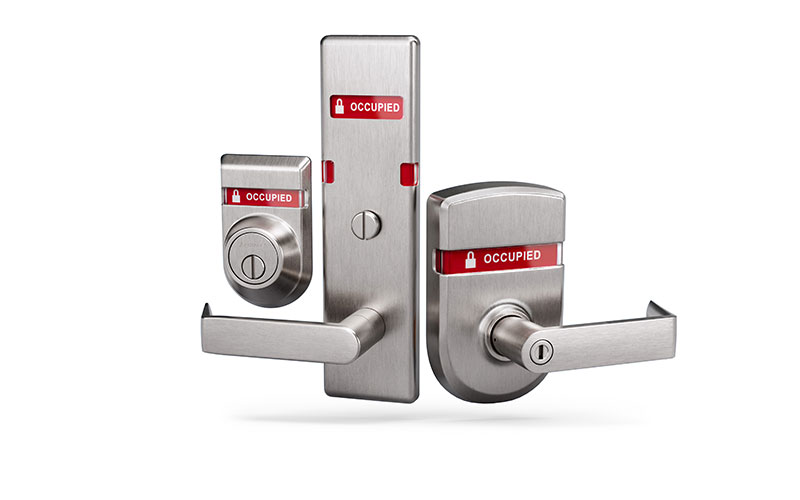Visual Indication Trims Support Patients and Providers in Health Care
For restrooms in health care settings, visual indication trims provide more than privacy
Whether it is for in-patient or out-patient care, locks with visual indication can support privacy when installed on single occupancy, assisted-use and family-use restrooms. It is important to note that the 2021 and 2024 editions of the International Building Code (IBC) has required assisted-use and family-use restrooms to be equipped with locking hardware with visual indication. The indication windows display a door’s status, eliminating the need to approach the door and test the handle. Some visual indication trims also offer peace of mind to those inside the restroom by letting the occupant know a door is properly locked. As such, these types of locking hardware can offer uninterrupted privacy during a visit to a hospital or medical center.
Visual indication trims can also support the ability for medical providers to monitor the locations of patients without impacting their sense of autonomy. Schlage’s portfolio of locks with visual indication trims offer the largest windows with 180-degree visibility, which allow health care professionals to check the status of a restroom without encroaching on patient privacy. As a result, visual indication trims can support elements of designs intended to optimize the level of care possible within a medical facility.

Locks with visual indication trims allow medical providers to recharge peacefully
In addition to restroom privacy, visual indication trims can impact a health care setting’s ability to support provider well-being. When making door hardware choices, specifiers can help ensure a greater feeling of privacy in select areas of the built environment, which can have a positive impact on occupant experience. For example, physician sleeping or on-call rooms can be an effective way to help medical professionals decompress and refocus during their shifts. The presence of visual indication trims on the doors to these rooms can help minimize interruptions.
When planned effectively, these spaces can help medical providers stay more focused. They can also support efforts to reduce health care professional burnout, which remains a pervasive and costly issue in the medical field. Locking hardware can give health care staff peace of mind that allows them to rest and recharge more fully—especially when this hardware includes visual indication trims.
Similar to restroom applications, these trims allow passersby to assess the door’s status with a glance, eliminating the need to jostle handles and unintentionally disturb the person inside the room. As locking hardware that contributes multiple points of value to building functionality, safety and security, locks with visual indication trim can be crucial in optimizing the physical environment in education, health care, retail spaces and more.
The post "Visual Indication Trims Support Patients and Providers in Health Care" appeared first on Building Design & Construction


